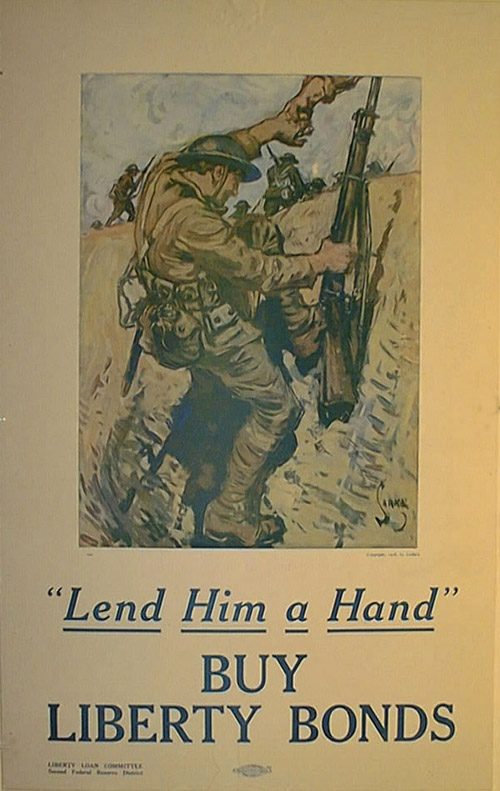
|
|
| This poster's main objective was to solicit funds from its target audience,
white Americans. The soldier is the classic American boy, strong,
handsome, and capable of battling for peace. The soldier could have
come from any town in America. He represents the football star/homecoming
king turned soldier and any mother's son or girl's sweetheart.
This image appeals to whites living in small-town America and presents several messages. One is the U.S. advancing in the war, while another is that the boys on the front are all right. These ideas are expressed through the lack of war images in the poster; there is not death, destruction, blood, or any of the common scenes of war. The overall image is not of loss but gain for the Americans winning the war. The soldier and his compatriots, as a group not as individuals, are advancing toward the battle without looking back. The soldier's look of determination relays the sense of determination the U.S. had in regards to ending the Great War. The hand, helping the soldier out of the trench, represents the home front and its importance in the conflict. The soldier would not be able to advance without the continued support of the everyday people in the U.S. The rest of the U.S. population was involved in the war effort through contributing in their work in industry and by buying war bonds; bringing glory and honor to their husbands and sons fighting for justice and peace. The posture reinforces this need for continued support. The indirect objective of this poster is to show the Americans winning
the war and that all is well on the front. The American boys are
looking out for each other, and the rest of the population should be looking
out for them as well. By contributing to the war effort American
patriots are performing their civic duty. This poster was meant not
only to solicit funds but to keep the American population actively supporting
their husbands and sons fighting on foreign soil.
|